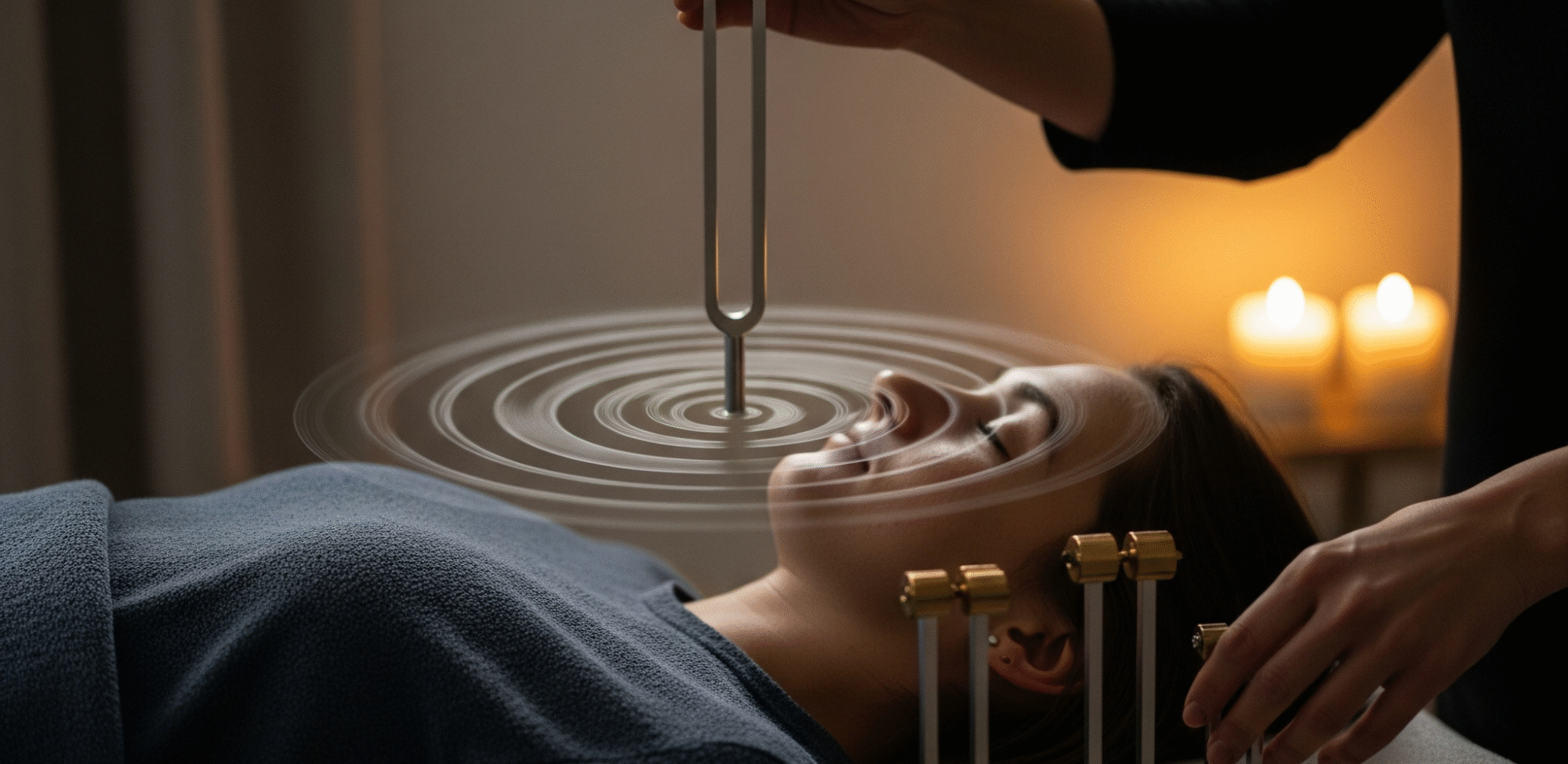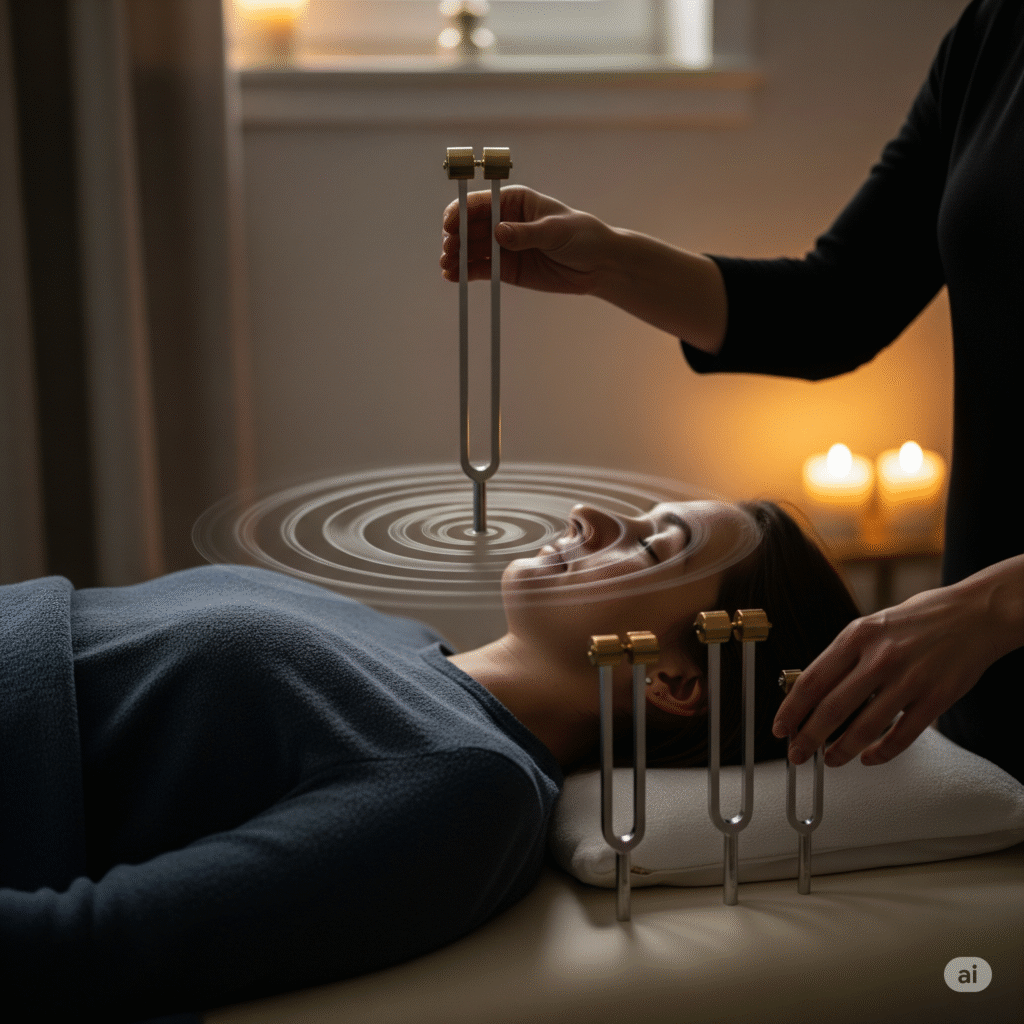How Sound Therapy Works: Understanding Its Science and Benefits

Sound therapy works by using specific sounds or vibrations to influence the brain and body, promoting relaxation and healing. It operates on the principle that sound waves can impact brainwave patterns, reduce stress, and improve mental and physical well-being.
Practitioners may use instruments, tones, or music to create a sound environment that encourages balance in the nervous system. This process helps the listener reach a calm, meditative state, which can aid in managing anxiety, pain, or sleep issues.
Understanding how sound therapy works can shed light on its growing popularity as a complementary health practice. Readers interested in exploring accessible and non-invasive wellness techniques will find its mechanisms useful to know.
What Is Sound Therapy?
Sound therapy uses specific sounds and vibrations to influence the body’s physical and mental state. It involves methods developed over centuries and applies structured principles to promote relaxation and healing.
Origins and Historical Background
Sound therapy has roots in ancient civilizations, including Egyptian, Indian, and Greek cultures. These societies used chanting, drumming, and tonal instruments to affect mood and health.
In India, the practice of Nada Yoga focused on sound as a path to spiritual and physical well-being. Tibetan monks are known for using singing bowls to produce harmonic overtones.
Modern sound therapy integrates these traditions with contemporary science. It emerged in the 20th century as researchers explored how sound frequencies impact brainwaves and body systems.
Common Types of Sound Therapy
Several forms of sound therapy are widely practiced today:
- Music Therapy: Uses music listening or playing instruments to support psychological and physical health.
- Tibetan Singing Bowls: Create harmonic vibrations aimed at stress reduction and mental clarity.
- Tuning Fork Therapy: Applies specific frequencies directly to the body to promote balance in tissues.
- Binaural Beats: Combines two close frequencies in headphones to influence brainwave activity.
Each type targets different therapeutic goals such as relaxation, pain relief, or emotional regulation.
Key Principles of Sound Therapy
Sound therapy relies on the principle that sound vibrations can influence brainwaves and cellular function. Different frequencies may induce states like relaxation, alertness, or meditation.
It also incorporates the concept of resonance, where certain sounds match the body’s natural frequencies, promoting balance. The therapy assumes that clearing “sound blockages” can improve physical and emotional health.
Practitioners emphasize consistent and controlled exposure to sound to achieve measurable effects. The environment and the client’s receptivity are critical for therapy success.
How Sound Therapy Works
Sound therapy operates through the interaction of sound waves and bodily systems. It impacts the brain, nervous system, and emotional state by utilizing specific frequencies and vibrations that create measurable physiological changes.
The Science of Sound and Vibrations
Sound consists of mechanical vibrations traveling through air, liquids, or solids. These vibrations have frequency, amplitude, and wavelength that determine how they are perceived and how they affect the body.
When sound waves enter the ear, they stimulate the cochlea, converting vibrations into electrical signals sent to the brain. Certain frequencies can entrain brainwave patterns, causing shifts from beta to alpha or theta states, which are linked to relaxation.
Instruments like tuning forks, singing bowls, and gongs produce sound vibrations designed to resonate with body tissues and cells. This resonance can promote physical changes such as improved circulation and reduced muscle tension.
Mechanisms of Action on the Brain and Body
Specific sound frequencies affect brain activity through a process called auditory driving or entrainment. This synchronizes brainwaves to the frequency of the sound, potentially improving focus, reducing anxiety, and inducing calm.
Sound vibrations also stimulate the parasympathetic nervous system. This reduces stress hormones like cortisol and helps lower heart rate and blood pressure.
On a cellular level, vibrations may enhance energy flow and cell metabolism. Sound can also activate the vagus nerve, key to regulating internal organ function and emotional states.
Influence on Emotional and Mental Wellbeing
Sound therapy can help regulate emotions by influencing neural pathways involved in mood control. Calming sounds tend to decrease activity in the amygdala, the brain’s fear center, reducing feelings of anxiety.
Music or tones chosen for therapy can stimulate the release of neurotransmitters such as serotonin and dopamine, promoting feelings of pleasure or relaxation.
Regular sessions may improve sleep quality and reduce symptoms of depression by creating a more stable, balanced mental state. The predictability of sound rhythm can also support emotional regulation and resilience.
Techniques Used in Sound Therapy
Sound therapy employs specific techniques that use vibrations and frequencies to influence mental and physical states. Each method targets different senses and brainwave activities to promote relaxation or healing.
Tuning Fork Therapy
Tuning fork therapy uses calibrated metal forks that emit precise frequencies when struck. Practitioners place the vibrating forks near or on specific body points to stimulate energy flow and reduce tension.
The vibrations are believed to balance the body’s energy systems by resonating with tissues and cells. This technique is often used to relieve pain, improve circulation, and enhance mental clarity.
Tuning forks come in various frequencies tailored to specific therapeutic goals. The sound waves penetrate deeply, affecting the nervous system and promoting a state of relaxed alertness.
Binaural Beats
Binaural beats involve playing two slightly different frequencies separately into each ear using headphones. The brain perceives a third tone—a beat—which influences brainwave patterns.
This technique is used to encourage states such as relaxation, focus, or sleep by entraining brainwaves to desired frequencies like alpha or theta waves. Timing and frequency differences are carefully controlled.
Users typically listen to binaural beats during meditation or therapy sessions to help reduce stress or anxiety. It requires quiet environments and headphones for effective results.
Gong Bath
A gong bath is a sound immersion experience where gongs produce complex waves and overtones. Practitioners play the gong continuously, creating a layered, enveloping soundscape.
This method aims to induce deep relaxation and altered states of consciousness through rich vibrations. The sound stimulates multiple senses and helps release emotional and physical tension.
Sessions usually last 30 to 60 minutes and take place in a quiet setting. The intense resonance of the gong interacts with the listener’s body and mind, promoting healing responses.
Singing Bowls
Singing bowls are metal or crystal bowls that produce sustained harmonic tones when struck or circled with a mallet. They generate soothing, resonant sounds linked to chakra balancing.
These bowls are used to create vibrations that align the body’s energy centers. The harmonic frequencies help reduce stress, improve mood, and facilitate meditation.
Singing bowls vary in size and material, each producing unique tones. Practitioners often combine bowls to produce layered sound patterns that calm the nervous system and enhance mindfulness.

Applications and Benefits
Sound therapy is used in various settings to target specific issues related to mental and physical health. Its effects on the nervous system help alleviate symptoms by altering brain wave patterns and promoting bodily relaxation.
Stress Reduction and Relaxation
Sound therapy often employs calming tones, such as binaural beats or nature sounds, to reduce stress. These sounds influence brain activity by shifting it towards alpha and theta waves, states associated with relaxation and reduced anxiety.
Clinical studies show that patients exposed to sound therapy report lower levels of cortisol, the stress hormone. This method supports relaxation without medication, making it suitable for those seeking non-pharmaceutical interventions.
Settings like spas and wellness centers frequently use sound therapy to help clients unwind. The technique may also improve sleep quality by calming an overactive mind before rest.
Pain Management
Sound therapy can complement pain relief strategies by interrupting pain signals in the nervous system. Specific frequencies are used to promote the release of endorphins, the body’s natural painkillers.
Patients with chronic conditions such as arthritis or fibromyalgia may experience reduced pain intensity following repeated sound therapy sessions. It works best when combined with physical therapy or medication.
The non-invasive nature of sound therapy provides an alternative for individuals intolerant to traditional pain treatments. However, it should not replace prescribed medical interventions without consulting healthcare providers.
Enhanced Focus and Clarity
Certain sound frequencies are designed to stimulate brain regions linked to attention and cognitive processing. This stimulation can improve concentration during tasks requiring mental effort.
Students and professionals may use sound therapy to create an environment conducive to sustained focus. Soundtracks producing beta wave frequencies are commonly employed for this purpose.
Research indicates improvements in memory retention and mental clarity when sound therapy is integrated into study or work routines. The technique is valued for its ability to reduce mental fatigue without causing overstimulation.
Choosing a Sound Therapy Approach
Selecting an effective sound therapy method involves understanding different professional options, self-guided techniques, and what typically happens during sessions. Each path offers distinct benefits based on personal needs, skill levels, and goals.
Working With Certified Practitioners
Certified sound therapists have formal training in sound healing modalities such as tuning forks, crystal bowls, or vocal toning. They assess individual conditions to design customized treatment plans targeting stress reduction, pain relief, or emotional balance.
Sessions with professionals often take place in controlled environments where sound frequencies are carefully calibrated. Practitioners monitor client responses for adjustments, ensuring the therapy aligns with health conditions and sensitivity.
Choosing a certified practitioner reduces risks of ineffective or unsafe practices. Verification of credentials and experience is advisable. Many practitioners belong to recognized organizations that regulate standards and ethics.
Self-Guided Practices
Self-guided sound therapy employs tools like meditation apps, binaural beats, or personal instruments. It offers flexibility in timing and intensity, making it accessible for daily stress management or focus enhancement.
Users benefit from experimenting with various sounds, including singing bowls or drumming, to identify what resonates best with their needs. However, self-guided approaches require discipline and awareness to avoid overuse or discomfort.
Resources such as online tutorials and community groups can support learning. Users should prioritize high-quality audio devices for clear sound reproduction, as poor quality may diminish effects.
What to Expect in a Session
A typical sound therapy session lasts between 30 and 60 minutes. Clients usually sit or lie down in a quiet space while the therapist uses sound tools around or on the body.
The environment is relaxed, with subdued lighting and minimal distractions to enhance receptivity. During the session, clients may experience deep relaxation, tingling sensations, or emotional release.
Post-session effects can include improved mood, reduced anxiety, or physical relief, but responses vary. Therapists often provide guidance on aftercare and recommend a series of sessions for sustained impact.
Safety and Considerations
Sound therapy is generally safe for most people when used appropriately. However, it is important to consider individual sensitivities to certain frequencies or loudness levels.
People with hearing impairments or tinnitus should consult a healthcare professional before starting sound therapy. Excessive volume can cause discomfort or damage to hearing, so volume control is essential.
Those with epilepsy or seizure disorders should approach sound therapy cautiously. Sudden or repetitive sounds might trigger episodes in some individuals.
Devices used for sound therapy vary in quality and safety standards. It is recommended to use equipment from reputable sources to avoid risks related to poor fabrication or harmful exposure.
Key considerations include:
- Avoiding high volumes that cause pain or ringing in the ears
- Monitoring responses during sessions to identify any adverse effects
- Seeking professional advice when underlying health conditions are present
Using sound therapy alongside conventional treatments should be discussed with healthcare providers to ensure it complements existing care plans.
Current Research and Future Directions
Recent studies explore sound therapy’s effects on brainwave activity and stress reduction. Researchers employ EEG and MRI technologies to observe neural changes during treatment sessions. These tools help clarify how different sound frequencies impact mental and physical states.
Clinical trials focus on sound therapy’s role in managing conditions like anxiety, depression, and chronic pain. Results show varying effectiveness depending on sound types and individual differences. More rigorous, large-scale studies are needed to confirm these findings.
Emerging research investigates personalized sound therapy using AI and machine learning. These methods aim to tailor frequencies to individual neurological patterns for enhanced outcomes.
| Key Research Areas | Description |
|---|---|
| Brainwave modulation | Investigating frequency impact on brainwaves |
| Stress hormone regulation | Measuring cortisol levels before and after therapy |
| Pain management | Studying sound’s influence on chronic pain relief |
| Personalized therapy | Using AI to customize sound treatment |
Future directions include integrating sound therapy with other treatments, such as cognitive-behavioral therapy or medication. Researchers also explore virtual reality environments combining sound for immersive therapeutic experiences.
The field continues to emphasize objective measurement and evidence-based frameworks to validate sound therapy’s efficacy. Advancements in technology will likely improve accessibility and precision for patients worldwide.

